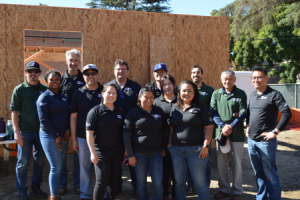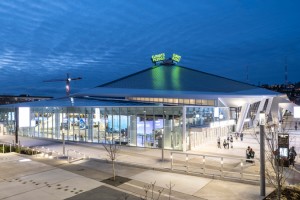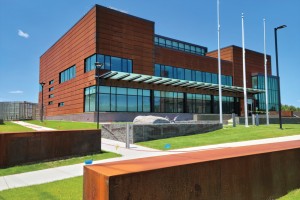Yearly Archives : 2022
Simpson Strong-Tie, the leader in engineered structural connectors and building solutions, today introduced the ACBH, an aluminum concealed beam hanger designed for mass timber structures and engineered to support loads up to 20 kips (equivalent to 20,000 pounds of force).
…Partnership to Enhance All Weather’s OneDek® Insulated Roof Deck System
All Weather Insulated Panels (AWIP) is pleased to announce a partnership with MTL Holdings to offer roof edge securement as part of AWIP’s OneDek® Insulated Roof Deck System.
…Colonias is to be succeeded by current Simpson Strong-Tie Chief Operating Officer Michael Olosky as part of a planned succession and will remain as an advisor during the transition.
…ICC Evaluation Service (ICC-ES) partnered with Habitat for Humanity of Orange County (Habitat OC) on November 10 in Santa Ana, California, for a day of team building and charitable contribution. Donning safety hats and protective eyewear, the ICC-ES team stepped out of their typical day job roles and got ready to work in construction building homes. Alongside the Habitat OC crew and volunteers, the ICC-ES team assisted in the construction of two single-family homes through various tasks. These future homes are part of Habitat’s vision of making affordable homeownership accessible to families in need.
…The National Council of Structural Engineers Associations (NCSEA) is pleased to publish the winners of the 2022 Structural Engineering Excellence Awards. The awards were announced Thursday, November 3rd, during NCSEA’s Structural Engineering Summit, held at the Chicago Hilton. A video of the presentation can be found on the NCSEA website. The Awards are given annually; each year, the entries highlight work from the best and brightest in our profession.
…Historic buildings draw us in with their character and sense of history. Cracks and imperfections are part of the appeal. But what happens when the quirks are not just superficial but indicators of significant structural distress? For Central Standard Craft Distillery, a Milwaukee-based company that purchased an 1874 building, the answer was to implement a top-to-bottom structural retrofit that would preserve the charm while also making the building safe to occupy. In January 2020, national interdisciplinary design firm HGA joined the mission to renovate the 16,000 square-foot, three-story building to create space for a bar, restaurant, tasting room, events space, and rooftop patio to promote Central Standard’s growing business. Originally designed by renowned Milwaukee architect Edward Townsend Mix, the building’s condition had worsened over the years due to foundation settlement and deficiencies in the original engineering design. Floors that were originally flat now sloped as much as 15 inches over 60 feet, while brick walls leaned to the west by as much as 6 inches per story.
…The new Massachusetts Bay Transportation Authority (MBTA) Iron Horse Park Operations Control Center (Figure 1) is designed to house dispatching and administrative operations for the MBTA north-side commuter rail system and the dispatching operations of the system for a commercial freight rail operator. The new 24/7 mission-critical facility features a clerestory that allows abundant natural light into the primary dispatching area, a state-of-the-art video wall, and doubly redundant MEP systems to protect against single points of failure. The challenges associated with constructing this essential facility on a site that could liquefy in an earthquake were identified early and drove several decisions regarding the ground floor level and foundation system. The MBTA selected Simpson Gumpertz & Heger, Inc. (SGH) to lead a multi-disciplinary design team for the design of the new facility. SGH served as the project’s Structural Engineer of Record (SEOR).
…Lightweight Aggregate Plays a Key Role in Pier Expansion
To expand Port Canaveral’s Cruise Terminal 3 (CT-3) in Florida, the project’s engineers needed something akin to a miracle – a cost-effective way to create structurally secure land where there was only ocean. To solve the technical constraints of the rebuild, the engineers turned to a lightweight geotechnical fill made from a rotary kiln-produced expanded shale, clay, and slate (ESCS). The unique physical properties of ESCS lightweight aggregate reduced applied vertical stresses and lessened the lateral force acting on the steel bulkhead wall system. In addition, the decreased loading on the structure allowed the design team to reduce the gauge and diameter required for the supporting pipe piles in the steel bulkhead wall system.
…









